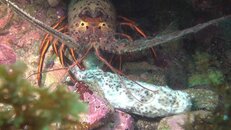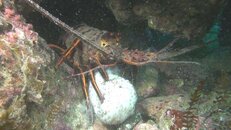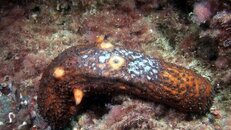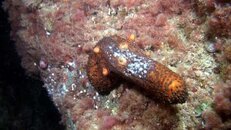Most of you are aware of the wasting disease that has decimated sea stars all up and down the West Coast of North America. Many of you have also seen high mortality in sea urchins here, most of which is probably due to thermal stress and a serious decline in a major food source (drift kelp).
Ruth Harris and I have been observing apparent wasting or death from elevated temperatures in sea cucumbers (Parastichopus) locally. I'm wondering if anyone else has been observing this as well? The individuals I've seen have had their brown dermis (skin) layer either stripped off or wasted away.
Here are images of a lobster feeding on the carcass of one such sea cucumber. You can see the brown dermis is almost completely gone.


Ruth Harris and I have been observing apparent wasting or death from elevated temperatures in sea cucumbers (Parastichopus) locally. I'm wondering if anyone else has been observing this as well? The individuals I've seen have had their brown dermis (skin) layer either stripped off or wasted away.
Here are images of a lobster feeding on the carcass of one such sea cucumber. You can see the brown dermis is almost completely gone.







